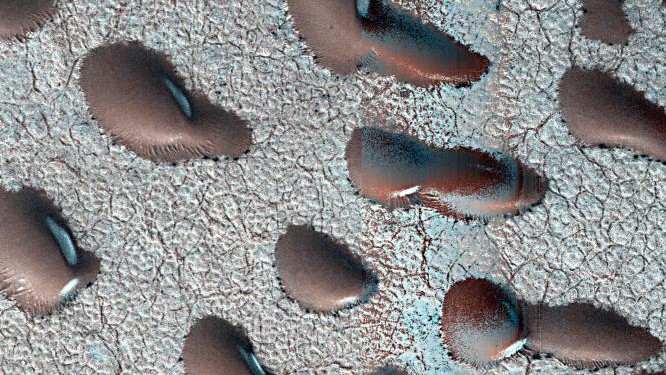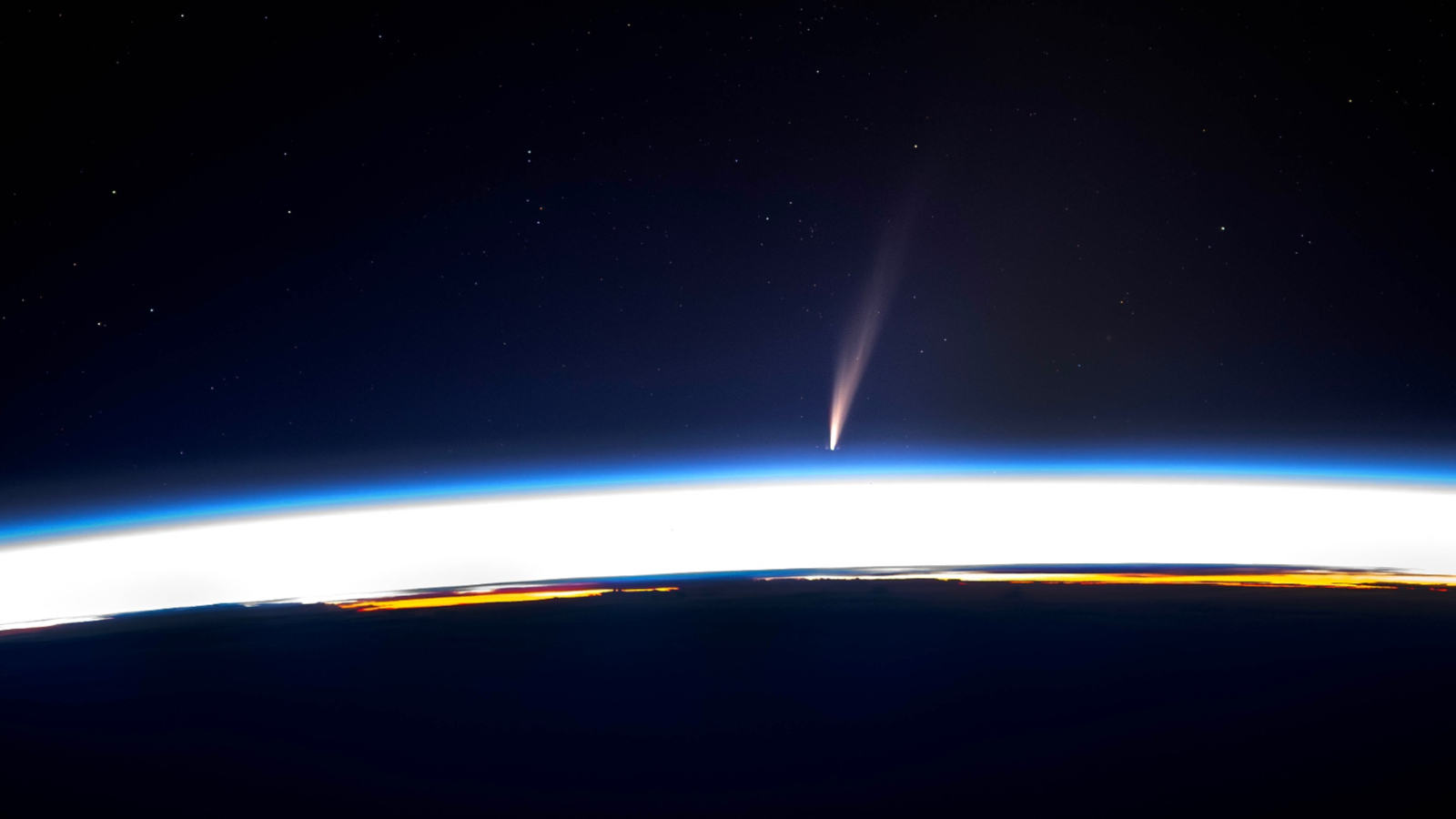What hidden realms lie beneath our feet? In this week’s science news, geologists uncovered a series of “sunken worlds” hidden deep within Earth’s mantle that they say shouldn’t be there. The buried blobs appear to be chunks of our planet’s ancient crust, but scientists can’t figure out how they got there.
Moving closer to the surface, an enormous reservoir of groundwater — twice the size of Lake Mead, the largest reservoir in the U.S. — has been discovered in the rocks of the Oregon Cascades.
And speaking of hidden water, weird bean-shaped blobs on Mars might offer new clues in our search for life on Mars.
Kidney beans on mars
Kidney beans on mars

Giant ‘kidney beans’ spotted in Mars satellite images could point to signs of water and life
NASA satellites have spotted what appears to be a field of giant kidney beans on Mars. But despite their uncanny appearance, these legume lookalikes are actually frozen sand dunes.
A layer of carbon dioxide frost holds the sand dunes in place, and physicists say that this frost might offer new insights into the red planet’s ancient atmosphere, and thus its ability to support liquid water — and potentially life.
Discover more space news
—Supermassive black hole spotted 12.9 billion light-years from Earth — and it’s shooting a beam of energy right at us
—Rare string of ‘cosmic pearls’ dance together in the universe
—Something invisible and ‘fuzzy’ may lurk at the Milky Way’s center, new research suggests
Life’s Little Mysteries

Do bay leaves actually add flavor, or is it all a con?
When a recipe calls for bay leaves, how often do you actually use them? The leathery leaf has been a mainstay of Mediterranean cuisine for centuries — but what do bay leaves actually taste like? And do they really add flavor?
Breakthrough in quantum computing

Schrödinger’s cat breakthrough could usher in the ‘Holy Grail’ of quantum computing, making them error-proof
Quantum computers are inherently noisy, which means they are also prone to making errors. The error rate of these machines has been a major obstacle in their development. But now, by using the famous Schrödinger’s cat paradox and atoms of antimony embedded in a silicon quantum chip, scientists have significantly reduced this error rate and detected problems before they occur.
Discover more physics and technology news
—’Spooky’ quantum entanglement discovered inside individual protons for 1st time ever
—Tiny AI chip modeled on the human brain set to boost battery life in smart devices
—Top-secret X-37B space plane has been in orbit for more than 1 year
Also in science news this week
—New supergiant ‘Darth Vader’ sea bug discovered in South China Sea — and it’s absolutely massive
—China plans to build enormous solar array in space — and it could collect more energy in a year than ‘all the oil on Earth’
—IVF may raise risk of certain disorders in babies — and epigenetic ‘signatures’ in the placenta could explain why
—One of Iceland’s largest volcanoes sees swarm of 130 earthquakes — could it be about to blow?
Science Spotlight

Giant horned dinosaur’s fossils were destroyed in WWII — but photos reveal it was an unknown species
A species of giant dinosaur has been identified from lost photos after its original fossils were destroyed during World War II. At 33 feet (10 meters) long, the newly named species, Tameryraptor markgrafi, is one of the largest land animals known to science.
Tameryraptor is thought to have existed in what is now North Africa around 95 million years ago. Its bones were first uncovered in Egypt’s Western Desert in 1914 and were held in the Bavarian State Collection for Paleontology and Geology in Germany until the building was bombed in 1944.
At the time, paleontologists believed the specimen belonged to a genus of large theropod dinosaurs called Carcharodontosaurus. However, previously unknown photographs — discovered in an archive at the University of Tübingen — suggest that the specimen belonged to a different group altogether.
Something for the weekend
If you’re looking for something a little longer to read over the weekend, here are some of the best long reads, book excerpts and interviews published this week.
—Why we need parasites, despite them leeching life from others
—Nuclear fusion could be the clean energy of the future — but these ‘tough’ challenges stand in the way
—20,000-year-old ‘human’ fossils from Japan aren’t what we thought
Science in pictures

‘Totally amazing’ astronaut photo captures comet C/2024 G3 ATLAS shooting past Earth from the ISS
NASA astronaut Don Pettit snapped a stunning shot of comet C/2024 G3 (ATLAS) as it raced past our planet for the first time in 160,000 years. The comet made its closest approach to Earth on Tuesday (Jan. 14), although it was mostly only visible in the Southern Hemisphere. However, it could also be seen from the International Space Station (ISS).
“It is totally amazing to see a comet from orbit,” Pettit wrote in a post on the social platform X.
Want more science news? Follow our Live Science WhatsApp Channel for the latest discoveries as they happen. It’s the best way to get our expert reporting on the go, but if you don’t use WhatsApp we’re also on Facebook, X (formerly Twitter), Flipboard, Instagram, TikTok, Bluesky and LinkedIn.
